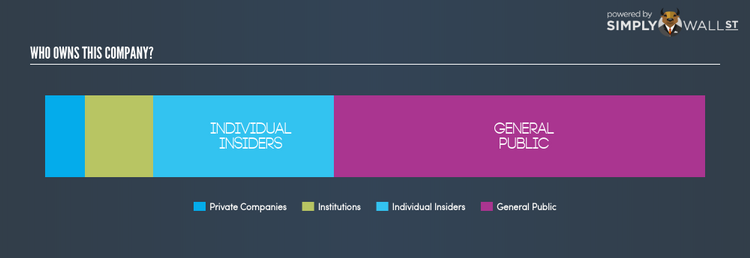Breaking Down Boss Resources Limited’s (ASX:BOE) Ownership Structure

In this analysis, my focus will be on developing a perspective on Boss Resources Limited’s (ASX:BOE) latest ownership structure, a less discussed, but important factor. Ownership structure has been found to have an impact on shareholder returns in both short- and long-term. Since the effect of an active institutional investor with a similar ownership as a passive pension-fund can be vastly different on a company’s corporate governance and accountability of shareholders, investors should take a closer look at BOE’s shareholder registry. All data provided is as of the most recent financial year end.
See our latest analysis for Boss Resources
Institutional Ownership
Institutions account for 10.37% of BOE’s outstanding shares, a significant enough holding to move stock prices if they start buying and selling in large quantities, especially when there are relatively small amounts of shares available on the market to trade. Although BOE has a high institutional ownership, such stock moves, in the short-term, are more commonly linked to a particular type of active institutional investors – hedge funds. For BOE shareholders, the potential of this type of share price volatility shouldn’t be as concerning as hedge fund ownership is is not significant,indicating few chances of such sudden price moves. While that hardly seems concerning, I will explore further into BOE’s ownership type to find out how it can affect the company’s investment profile.
Insider Ownership
I find insiders are another important group of stakeholders, who are directly involved in making key decisions related to the use of capital. In essence, insider ownership is more about the alignment of shareholders’ interests with the management. BOE insiders hold a significant stake of 27.41% in the company. This level of insider ownership has been found to have a negative impact on companies with consistently low PE ratios (underperformers), while it has been positive in the case of high PE ratio firms (outperformers). It’s also interesting to learn what BOE insiders have been doing with their shareholdings lately. Insider buying may be a sign of upbeat future expectations, however, selling doesn’t necessarily mean the opposite as insiders may be motivated by their personal financial needs.
General Public Ownership
The general public holds a substantial 56.09% stake in BOE, making it a highly popular stock among retail investors. With this size of ownership, retail investors can collectively play a role in major company policies that affect shareholders returns, including executive remuneration and the appointment of directors. They can also exercise the power to decline an acquisition or merger that may not improve profitability.
Private Company Ownership
Potential investors in BOE should also look at another important group of investors: private companies, with a stake of 6.14%, who are primarily invested because of strategic and capital gain interests. With this size of ownership in BOE, this ownership class can affect the company’s business strategy. As a result, potential investors should further explore the company’s business relations with these companies and find out if they can affect shareholder returns in the long-term.
What this means for you:
BOE’s considerably high level of institutional ownership calls for further analysis into its margin of safety. This will enable shareholders to comfortably invest in the company while avoid getting trapped in a sustained sell-off that is often observed in stocks with this level of institutional participation. However, ownership structure should not be the only focus of your research when constructing an investment thesis around BOE. Rather, you should be looking at fundamental drivers such as Boss Resources’s past track record and financial health. I urge you to complete your research by taking a look at the following:
NB: Figures in this article are calculated using data from the last twelve months, which refer to the 12-month period ending on the last date of the month the financial statement is dated. This may not be consistent with full year annual report figures.
To help readers see pass the short term volatility of the financial market, we aim to bring you a long-term focused research analysis purely driven by fundamental data. Note that our analysis does not factor in the latest price sensitive company announcements.
The author is an independent contributor and at the time of publication had no position in the stocks mentioned.

